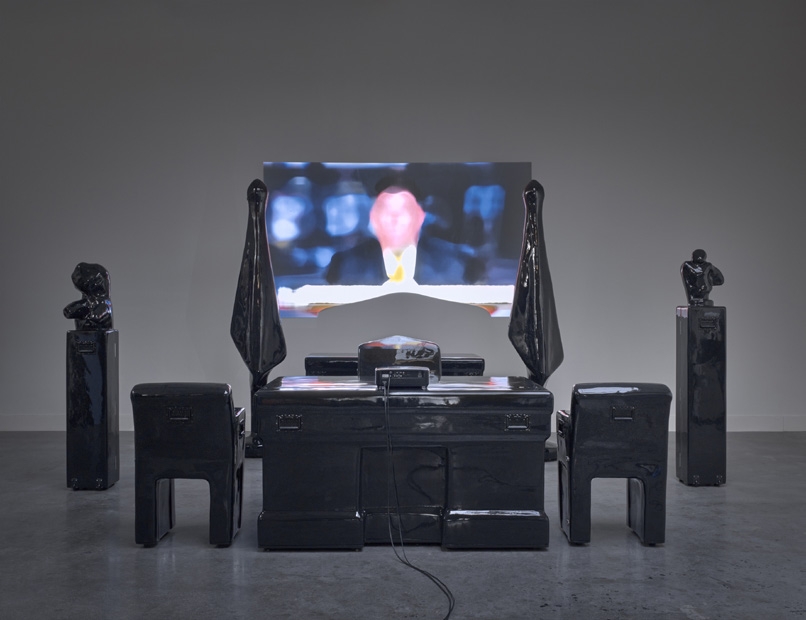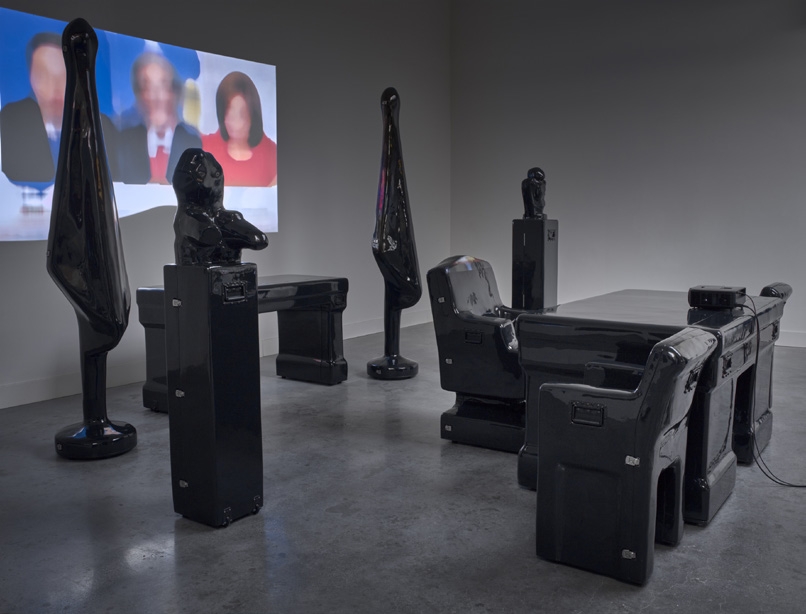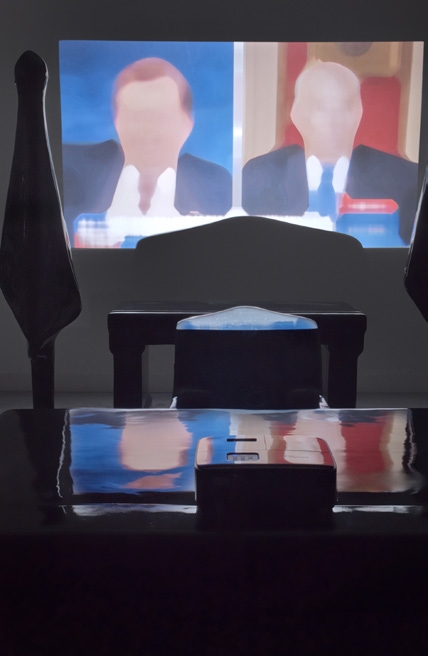The suspicion of a familiar setting
The protective case – the abstracted vessel that encloses and protects a precious object, has, used as a transport case, a long tradition in art history. In Case, nine custom-made transport cases were manufactured, each protecting its contents and secured with sturdy locks. These spatial cases offer the viewer the suspicion of a very familiar setting: the Oval Office of the President of the United States. The viewer might recognize a desk with an office chair and two separate chairs at the ends. Behind the desk there are two large objects, presumably the flags of the president and of the United States. On either side of the desk arrangement we find two classic torsos.
Rival news media
There is no president to be found behind this presidential ‘desk’, but we see video images projected on the back wall. They are distorted and we hear the accompanying sounds, almost unintelligible: these are the images of the rival news media. The outrage and stiltedness are tangible as well as the anger and frustration. An endless stream of opinions and assumptions are hurled into the world, raising the question of who and what still controls the system that is symbolically expressed by this ensemble of these nine cases.
Symbol of a free world
What does this symbol of the free world and democratic values include and what is the significance of the individual elements within it? Through their casing, they try to secure their content and thus separate themselves from our world. Does this setting still actually constitute a part of the real world?





